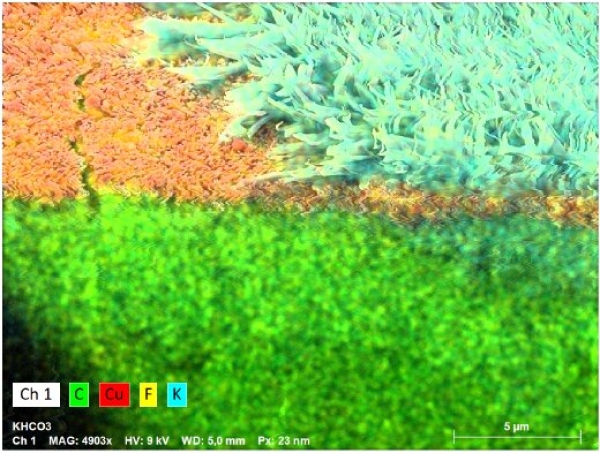The greenhouse gas carbon dioxide can be converted into useful hydrocarbons by electrolysis. The design of the electrolysis cell is crucial in this process. The so-called zero-gap cell is particularly suitable for industrial processes. But there are still problems: The cathodes clog up quickly. At the HZB, Matthew Mayer and his team has now investigated what causes this and how this undesirable process can be prevented.
The combustion of oil, coal or natural gas produces carbon dioxide, or CO2. This famous greenhouse gas is a major driver of global warming, but it is also a raw material. It is technically possible to convert CO2 into useful carbon compounds, a process which requires energy, water, suitable electrodes and special catalysts. CO2 can be electrochemically converted to carbon monoxide, formate or methane, but also to ethylene, propanol, acetate and ethanol. However, industrial processes must be designed to be highly selective and extremely efficient to produce only the desired products and not a mixture of products.
Converting CO2 Back into Fuel
"By electrolytically reducing CO2 to useful hydrocarbons, we can produce new fuels without using fossil resources. We thus are putting the CO2 back into the cycle, just like recycling," explains Dr Matthew Mayer, leader of the Helmholtz Young Investigator Group “Electrochemical Conversion” at HZB. The electrical energy for the electrolysis can be provided by renewable energy from wind or solar, making the process sustainable.
Read more at Helmholtz-Zentrum Berlin für Materialien und Energie
Image: The EDX measurement shows that at higher concentrations of dissolved potassium compounds in the electrolyte, potassium crystals are deposited on the cathode (right upper corner). (Credit: © HZB)


